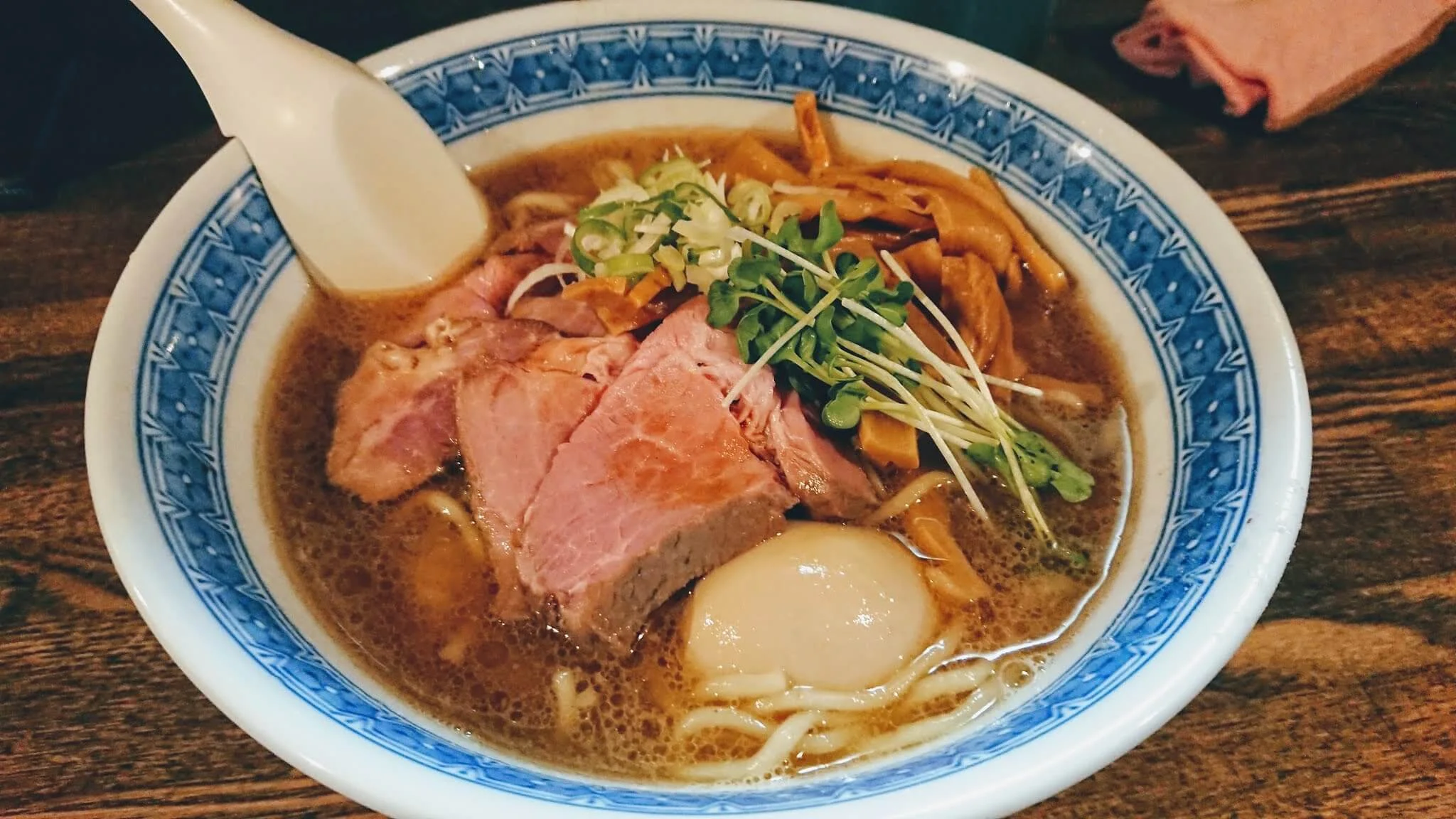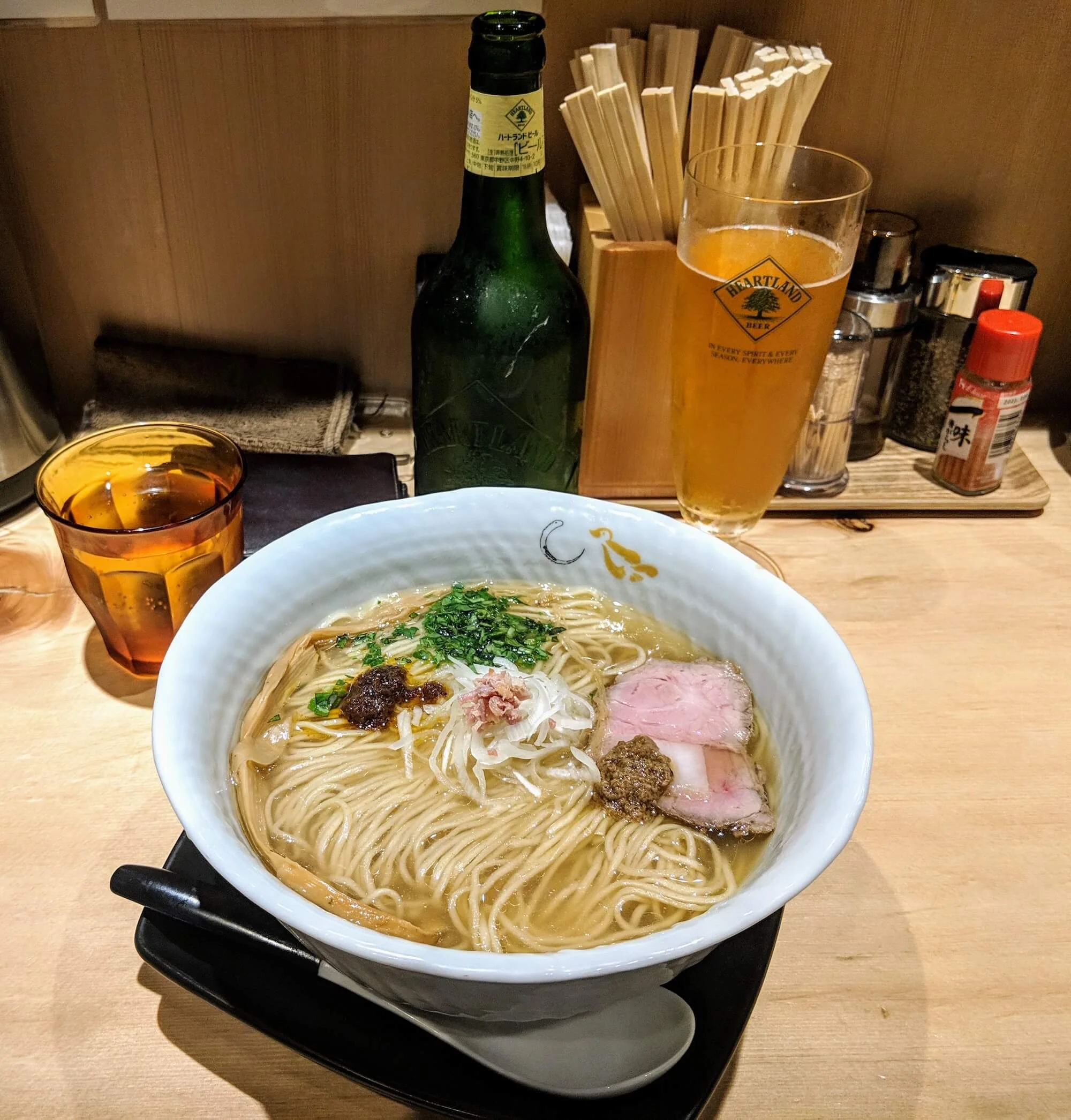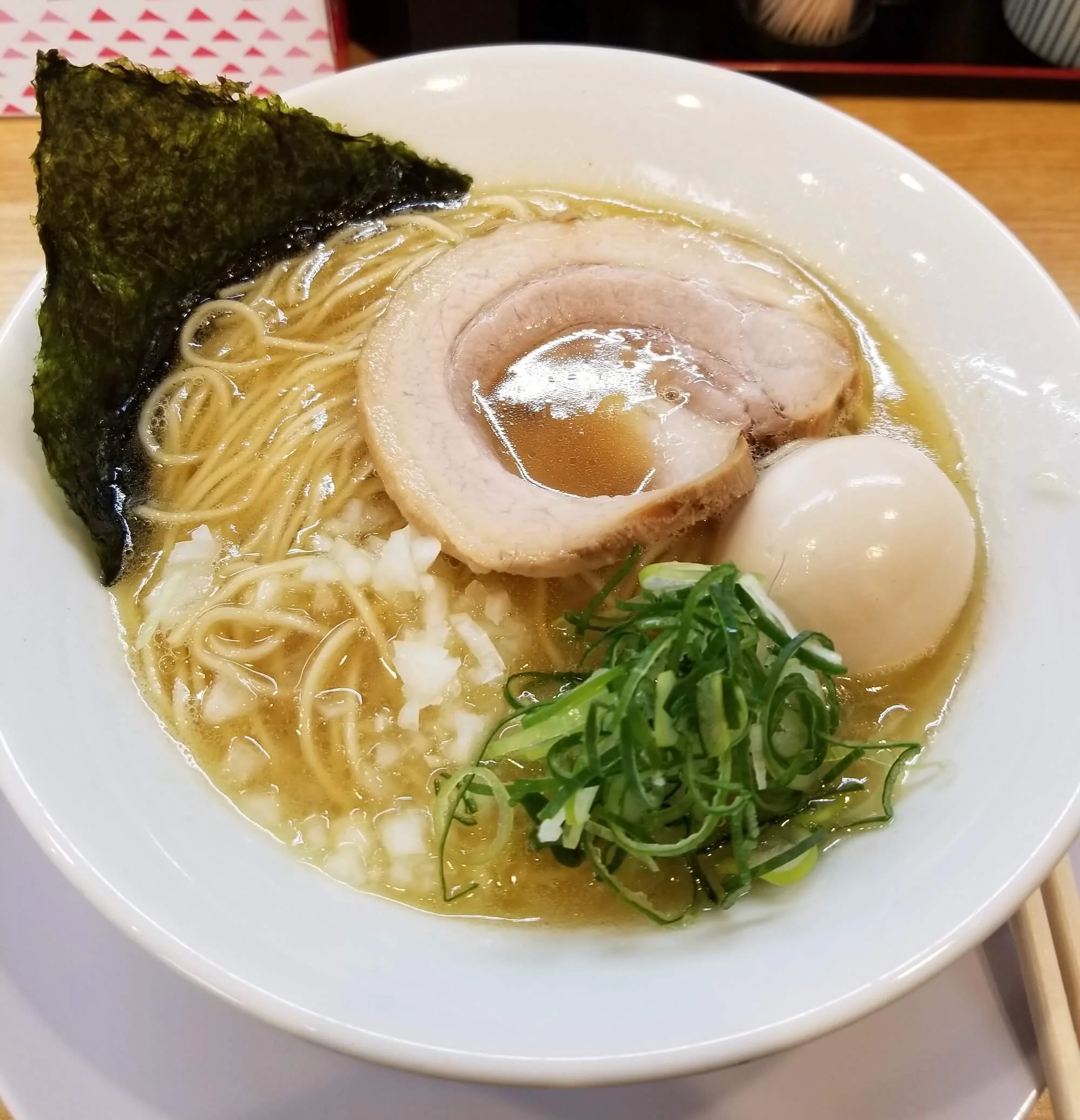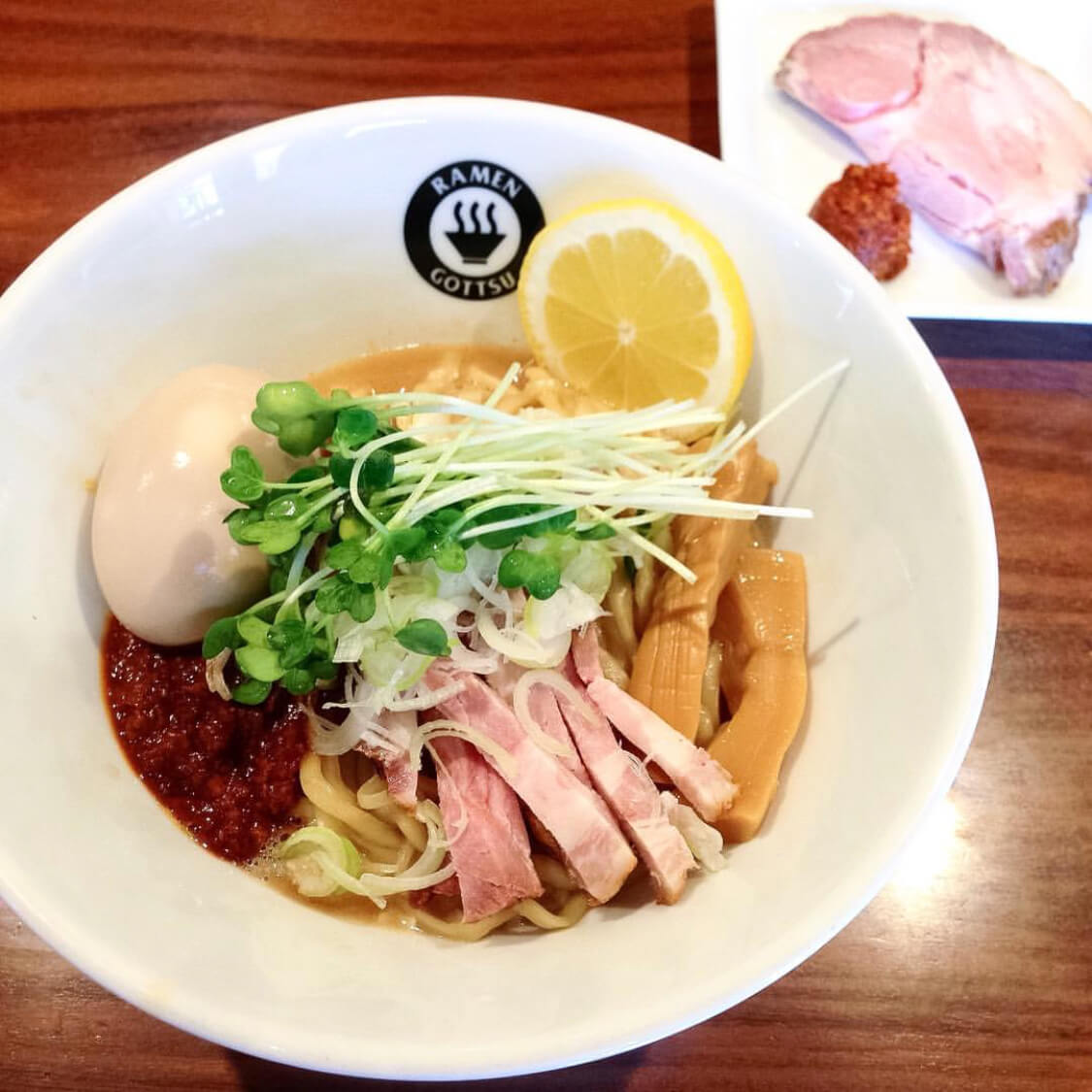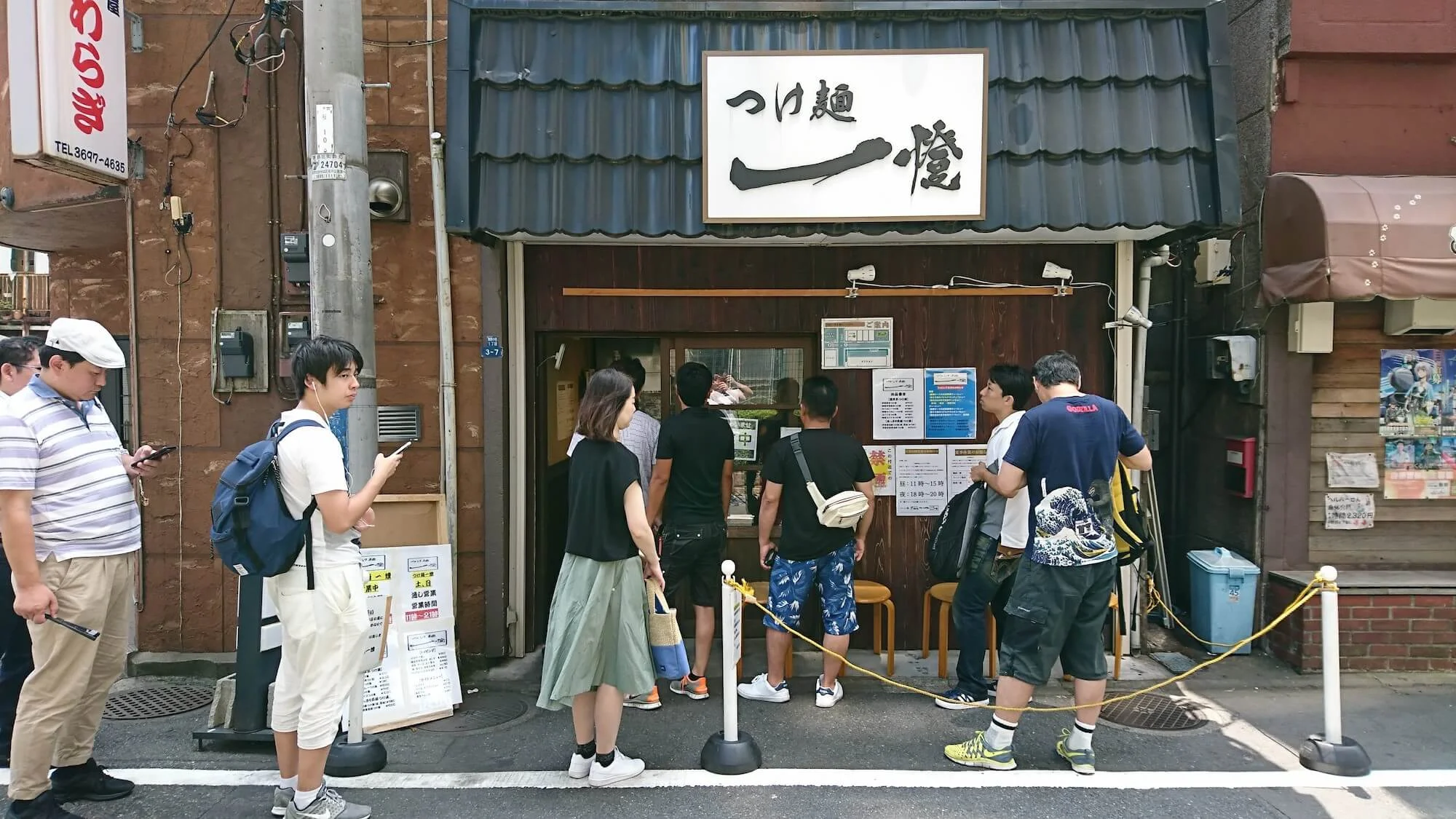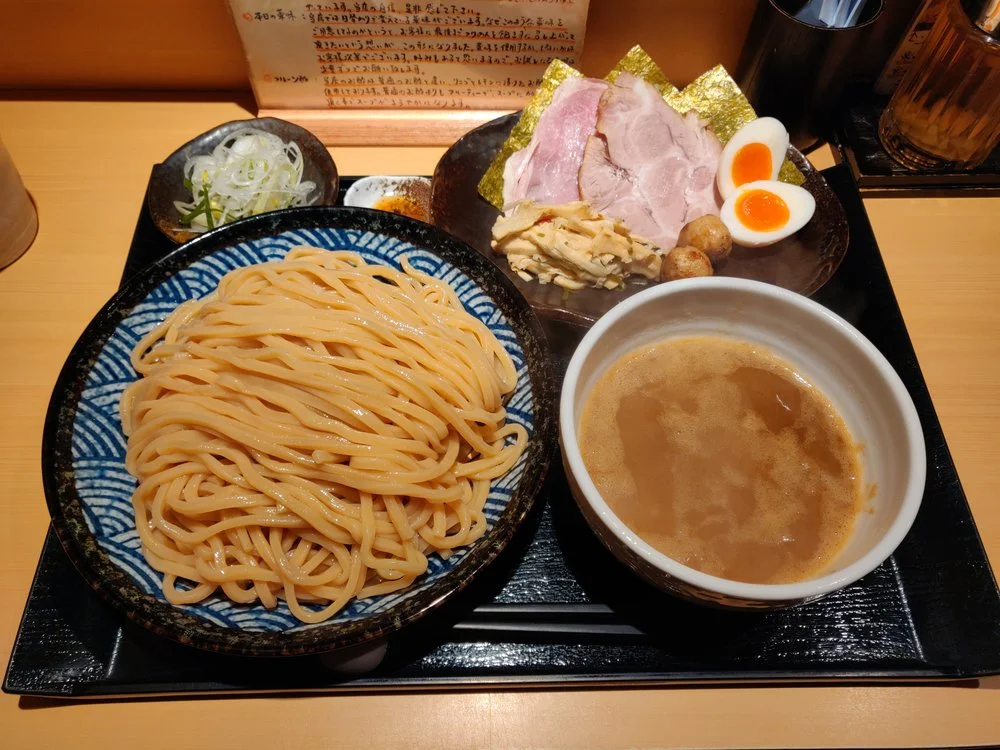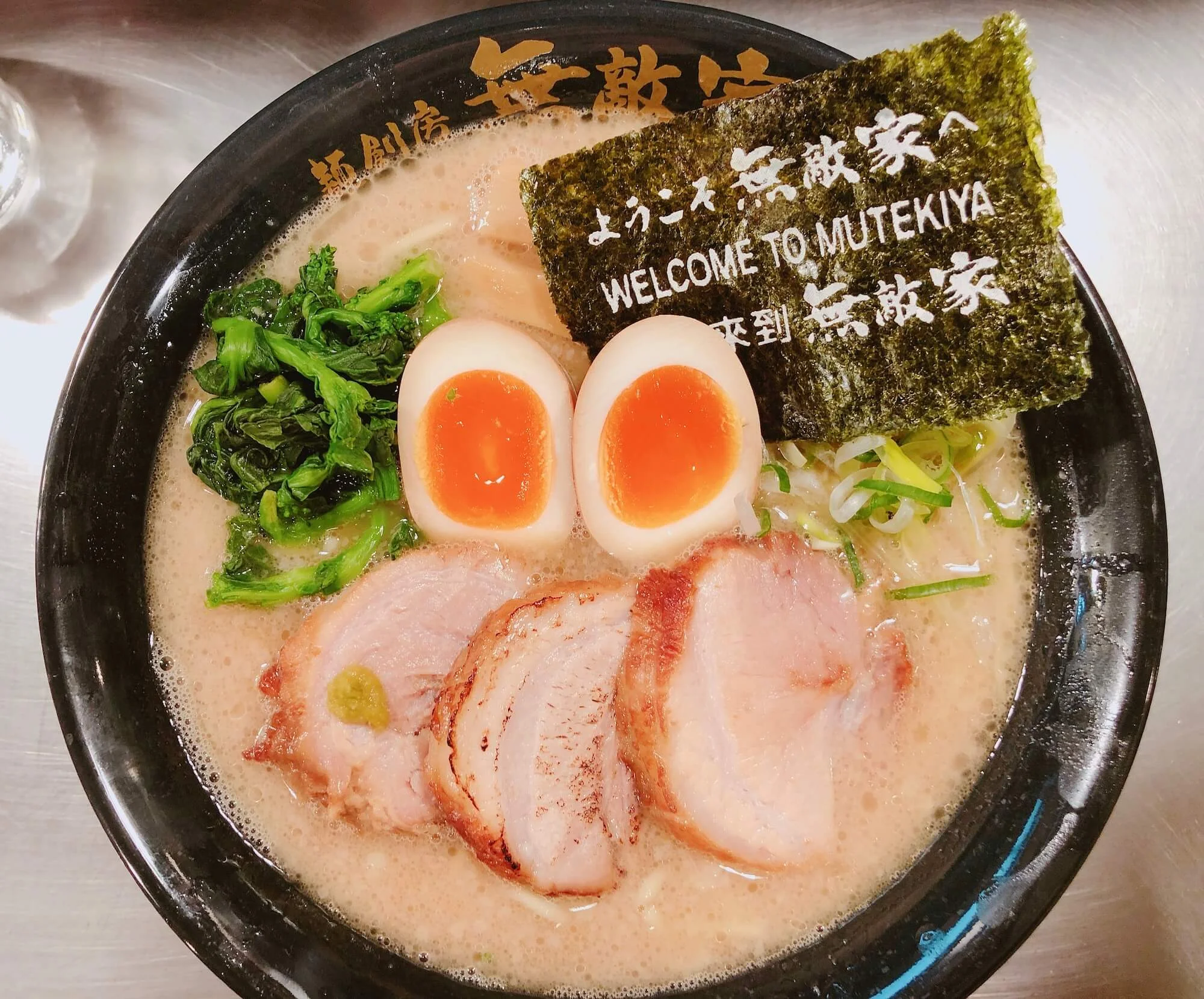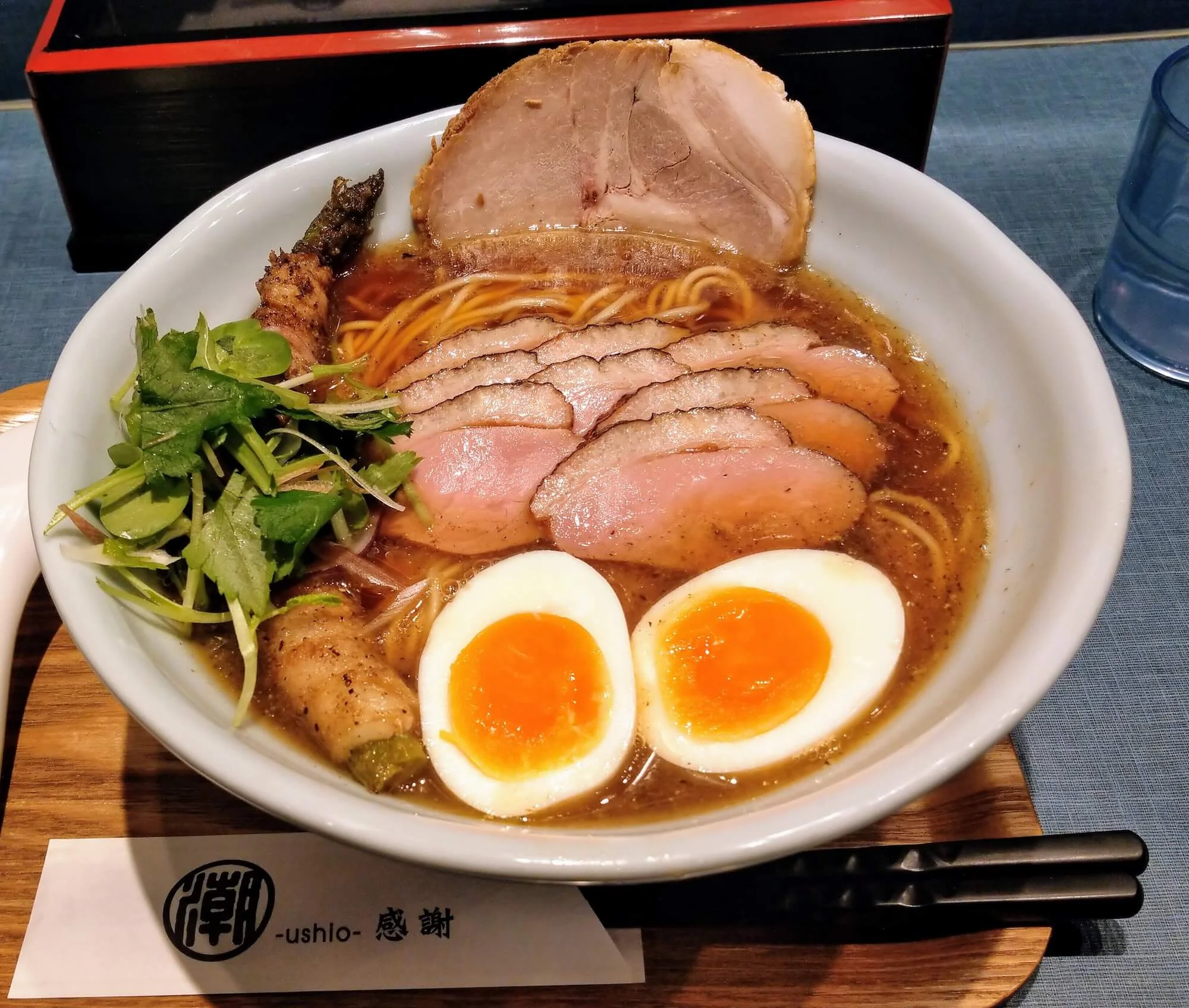Best Ramen in Tokyo
Do you love Ramen as much as we do?
There are around 10,000 ramen shops in Tokyo alone - which is a daunting number to filter through. But since we’re completely obsessed with ramen, we’ve combed through the backstreets and neighborhoods of Tokyo to bring you our list of best Ramen of Tokyo for 2024!
As a bonus, I’ve added some of my favorite sushi spots at the bottom too!
Table of contents
Sansanto (燦燦斗)
Sansanto is only open for 2.5 hours each day (6 pm to 8:30 pm) due to the work intensive process of the ramen master Gotou-san here. He prepares the noodles, toppings, and soup broth from scratch each day by himself.
The soup itself is a gyokai tonkotsu double soup (seafood and pork) made from dried mackerel, sardines, venison, chicken, and pork bones. Everything from the noodles to the chashu and egg are made perfectly. The shop is a bit old school and has that nostalgic charm of days gone past. Totally recommended if you like finding hole in the wall type joints!
Opening Hours: 6pm-8:30pm
Days Closed: Monday & Thursday
3 Chome-16-15 Nakajujo, Kita City, Tokyo 114-0032, Japan
東京都北区中十条3-16-15
Hototogisu (SOBA HOUSE 金色不如帰)
Freshly minted with a Michelin star, Hototogisu is the third ramen joint to get the star treatment. It’s a remarkable turn of events, since ramen has long been seen as a cheap eats kind of meal. Hototogisu is one of the ramen restaurants leading the way in sourcing quality ingredients and using the best techniques to make the best bowl of ramen possible.
Even before they got their star, they were immensely popular due to their listing as a Michelin Bib Gourmand recommendation. Now, if you try to show up at noon, it’ll take you hours to get in. My advice would be to get there a 10 minutes before open at 11:20 am.
The thing to get here is definitely the Shoyu Ramen bowl. The broth is made from three different kinds of clam and then combined with a chicken and fish broth. The broth is prepared with low heat for a long time with the end result being a super smooth clam flavor with no bitterness. The tare is made from a blend of 4 different soy sauces and concentrated umami from seafood and chicken. The chashu, ramen egg, and menma are fantastic as well.
But really makes Hototogisu stand apart is the special oil, which is a blend of porcini oil, porcini mushroom flakes, and black truffle oil. When mixed with the broth, it’s a ramen marriage made in heaven.
Opening Hours: 11:30am-3pm, 6:30pm-10pm
Days Closed: None
2-4-1 Shinjuku, Shinjuku-ku, Tokyo 160-0022
東京都新宿区新宿2-4-1
Menya Mizukaze (麺屋 瑞風)
Opened in 2016 by Ramen Master Kenji Okamoto, this six seat restaurant makes one mean bowl of Tori Paitan ramen. He makes the ramen bowls two at a time, so if there’s a line - it might take a while to get in.
The ticket machine, which might not have any English on it, goes as follows:
First Row: Niboshi Ramen
Second Row: Tori Paitan Ramen
First column: Just ramen
Second column: Ramen with soft egg
Third column: All of the above with char siu pork
Fourth column: All of the above with even more char siu pork
Third row: Extra noodles, egg, or char siu
Fourth row: Fried rice - S, M, or L
Fifth row: Plain rice
The complex broth consists of pork, chicken, chicken feet, chicken skin and pork feet that is simmered for more than nine hours so the complex flavors can develop. It’s a bit thicker than a normal ramen broth, but in a good way. It’s probably one of the best Tori Paitan bowls in Tokyo.
There is also some really crazy hot sauce on the counter (called death sauce) in case you need something spicy to add to your ramen.
Make sure to get some add on broth (wari) when you’re close to finishing your ramen, so you can have a taste of a lighter version of the Tori Paitan.
Opening Hours: 11:30am-2pm, 6:30pm-9pm
Days Closed: Thursday & Friday
3-11-13 Tanashichō, Nishi Tokyo-shi, Tokyo 188-0011
東京都西東京市田無町3-11-13
Nakiryu
One of the few ramen joints in Japan to gain a Michelin star - Nakiryu is absolutely one of the most sought after bowls of ramen in town. During the lunchtime rush, the wait is sometimes over two hours for this 10 seat restaurant. To get around this, try afternoon or evenings during the weekdays. Either way, it’s still worth the wait!
If you don’t know what to get, the signature Tantanmen is a great choice. You can pick from either the hot or normal version. The hot one isn’t even that spicy, so if you’re worried about that - just go with the hot one!
I’d describe the broth as a balanced creamy, spicy, nutty, and umami bomb. The noodles are a bit thinner than normal and work surprisingly well with the broth. You can go with either minced pork or a braised Chashu slice - both good choices. For 1100 Yen or $10 USD, it’s an absolute steal being able to have a Michelin starred bowl of ramen!
Nakiryu 創作麺工房 鳴龍
Address
2-34-10, Minamiohtsuka, Toshima-ku, Tokyo, 1700005, Japan
Nearest Station
JR Otsuka Station, 5 minutes on foot
Phone Number
03-6304-1811
Hours: 11:30 a.m. – 3:00 p.m., 6:00 p.m. – 9:00 p.m.
(Mondays only: 11:30 a.m. – 3:00 p.m.)
Closed: Tuesdays
Credit Card: not accepted
Reservation: not accepted
Ramen Gottsu (らーめん ごっつ)
Ramen Gottsu is famous for their Double Soup, which is part Niboshi dried fish broth and part pork bone broth. This is a bit of a new style of ramen and Gottsu absolutely crushes it. They’ve somehow reduced the pork aroma and retained all the flavors of the ingredients. When you taste the soup, you’ll first notice the Niboshi fish, followed by the pork flavor. The noodles are medium thickness and pair very well with the thick, heavy soup. The chashu is paper thin and roasted perfectly. You’ll also appreciate the freshly grated yuzu peel on top of the ramen. I also recommend getting the spicy miso ground pork to add to the soup base.
The other thing I recommend getting is the rice bowl with the nicely cubed pieces of pork char siu. You can really taste the smoky char on the pork and combined with the rice, it’s perfect.
Opening Hours: 11am-3pm, 6pm-9pm (Sunday open lunch only)
Days Closed: Monday & 3rd Tuesday of the Month
1-29-16 Nerima, Nerima-ku, Tokyo 176-0071
東京都練馬区練馬1-29-16
Menya Ittō (麺屋一燈)
Regarded as one of Tokyo’s best bowls of Tsukemen, if not all of Japan, you’ll have to plan your visit here accordingly. They open at 11 am but if you want to eat around noon, I’d get here around 10-10:30 am to get a ticket in the queue. You can get the ticket and then come back at the allotted time.
I’d definitely recommend getting the Tsukemen here, as it’s their claim to fame. The broth is made by simmering chicken carcasses for many hours to extract max collagen and broth. It’s then paired with dried seafood and vegetables to bring out umami and sweetness. They add some yuzu zest to cut through the heaviness of the broth and paired with the perfect chewy noodles - it’s really an amazing bowl of ramen! I really love how the Tsukemen broth clings to the noodles!
Opening Hours: 11am-3pm, 6pm-10pm
Days Closed: None
1-4-17 Higashishinkoiwa Katsushika Tokyo
東京都 葛飾区 東新小岩 1-4-17
Tsukemen Michi (つけ麺 道)
If you haven’t figured it out yet - I’m totally obsessed with Tsukemen dipping ramen. So here’s another great place - a bit far from central Tokyo but totally worth it if you love Tsukemen as much as I do. (It’s just a short walk from Kameari station on the JR Joban line. )
Like most ramen shops in Tokyo, you have to get a ticket from the machine first. They’ll give you an English menu if you need help, but my quick translation of the machine goes like this:
First row: 1) Tsukemen ( green onions and herbs), 2) Tsukemen with the previous plus char siu, ramen egg, menma, and seaweed, 3) previous plus extra toppings of all.
Second row: sizes of 100g, 200g, 300g, or 400g
Third row: creme brûlée, beer, and oolong tea.
The delicious broth is made from a blend of pork bones and dried fish - super creamy and rich. You can taste a subtle sweetness coming from the vegetables in the broth. I loved the perfect thickness of the broth that covered each noodle dip. Just the perfect blend of salty, sweet, and creamy.
If you’re really into it, make sure you get extra noodles which automatically gets you extra broth.
Opening Hours: 11:30 - 7 pm (or until they run out)
Days Closed: Monday
Note: Tuesdays they have a Shio salt based Tsukemen
- 5-28-17 Kameari, 葛飾区 Katsushika City, Tokyo 125-0061, Japan
Mutekiya 無敵家 @Ikebukuro
Mutekiya is a ramen shop located in Ikebukuro. This place nearly always has a line in front of it and is very foreigner friendly with menus in English, Thai, French, and Korean.
About the menu - if you don’t know what to get - the star of the menu is their Tonkoku flavored ramen (Mutekiya or Tokumaru). You can also go for the Tyasyumen which has extra slices of their chasu pork.
Everything here is made from scratch and 100% natural ingredients (no flavor enhancers). The noodles are specially made with wheat from Hokkaido and they have special Kujo Negi sent from Kyoto.
As always I’d recommend getting a creamy Ramen Egg and extra slices of Chashu.
Ushio
Ushio immediately earned a spot in the heart of Tokyo’s ramen maniacs right after its opening in 2012. The bowl that you have to try here is the Nihon-ichi shoyu soba ramen, a creation of excellence from the soup enhanced with high-grade kelp from Hokkaido to the noodles and the toppings.
The soup definitely is the showstopper of the bowl. It is made out of unpasteurized soy sauce left to age and making up the base, which is then further enhanced with fish. It is incredibly rich in umami flavor and boasts an aroma that’ll make your mouth water with the first whiff.
The toppings are pork shoulder chashu, flavored egg, and a wonderful abundance of different vegetables. The bowl is a beautiful harmony of all of its many contents, tickling your taste buds with a rich taste and medium-thick noodles.
Next to the toppings described above, every bowl comes with three slices of smoked duck meat. The meat has an amazingly unique flavor that’ll leave you craving for more. The gently fishy flavor of the soy sauce broth enhances the exquisite duck even more.
Lunchtime gets rather busy but apart from that, you won’t have to endure long waits before being seated. The best time to go is immediately after opening.
Ushio
麺巧 潮
Address
2-4-4 Kandaawaji-cho Chiyoda-ku, Tokyo 1010063, Japan
Nearest Station
Tokyo Marunouchi Line Awajicho Station, 1 minute on foot
Phone Number
03-6206-9322
Hours: 11:00 a.m. – 7:00 p.m. (closes early if out of soup)
Closed: Sundays
Credit Card: not accepted
Reservation: not accepted
Wakaba Ramen
Ramen Master carefully placing the noodles in the bowl
The morning we landed in Tokyo, we headed straight for Tsukiji Market (Tsukiji Market has since moved). The first place that caught my eye and nose was this tiny Ramen stand that a ton of locals were lining up for. The master chef look totally legit as did the bowls of ramen and all the smells wafting out from the stand.
We ended up getting in line and getting a bowl for ourselves.. which was the right move.
It ended up being one of the best bowls of Ramen I've ever had that wasn't Tsukemen, Tori Paitan, or Pork broth based. It was actually a soy sauce based Ramen, which I usually don't like. But this one was had such a deep and complex flavor without being overly salty.
I can't describe how good this smelled and tasted!
More careful noodle placement
The storefront and the hungry customers
This bowl lasted all of 1 minute..
Ginza Kagari - Delicious Michelin Star Ramen
Michelin Starred Tori Paitan Ramen
Not many places in the world give Ramen joints a Michelin star, but Japan is one of those places. They've actually got a couple of Michelin starred ramen joints, and Ginza Kagari is one of them.
They won it because of their deliciously complex Tori Paitan, which is Ramen with a chicken based creamy soup base. I've only had Tori Paitan once at Tokyo Mensho here in San Francisco. I thought it was pretty good, but a bit pricey at $18 and not quite as good as the Tsukemen at Tsujita in LA. The Tori Paitan at Kagari however, was one of the best tasting bowls of Ramen I've ever had. It had such an intense chicken flavor with many layers revealing themselves with each bite. Like many ramen shops in Japan, they finished the dish with yuzu peel, giving it a bright nose and finishing flavor.
We had both the Tori Paitan and the Tsukemen variation. Both were amazing, so you couldn't really go wrong with either choice.
Tori Paitan Tsukemen - just as good!
Tori Paitan Tsukemen Broth
https://www.instagram.com/p/BGl4e9TjYTH/ - from David Chang
Rokurinsha Tsukemen
Before you mix it all up
One of the best bowls of Tsukemen I've ever had, this nondescript Ramen joint is located inside the main Tokyo train station with a long snaking line at all times. If you don't know what Tsukemen is, imagine a deconstructed bowl of Ramen where the noodles are served separately from the soup. But in this case, the soup is super concentrated - so you just dip the noodles into the soup, which coats the noodles, and then you eat it that way. At the end of the meal, you can ask for them to dilute the dipping soup, which you should totally do.. because it's complete magic to drink that diluted soup at the end.
So back to the Tsukemen here - absolute heaven. The noodles were springy, thick, and chewy with the right curly texture to soak up all that yummy dipping soup. The soup had this amazing complex umami flavor that I just could not get enough off. They also add Yuzu on top of the bowl to give it that extra oomph. I used to think Tsujita in LA had the best Tsukemen, but Rokurinsha has them beat in spades. It's also one of David Chang's (Momofuku) favorite places to eat Tsukemen.
Abura Soba - Amazing Noodles
If you can't tell already, I'm in love with the noodle restaurants in Tokyo. 😁
Abura Soba is no exception and is one of the original 'soupless' ramen joints I discovered back in my first trip to Japan in 2013.
The bottom of the bowl has a flavorful sauce, along with super tender pork chashu on top. The cool thing about this restaurant is that all the sizes are the same price. So if you're super starving, you can get the extra large for the same price as the medium size.
Post mix and after some wolfing down..
So delicious....
Beef Street Noodles
Absolute gold in a bowl and comfort food to the max
They really need to open one of these here in the states because we were eating here as often as we could. What they serve here is what is called 'soupless' ramen with roast beef and poached eggs on top. They place a delicious oil-based sauce at the bottom of the bowl which you're meant to stir around and coat the noodles with. On top there is delicious, tender roast beef along with a runny egg, daikon radish, and other spices. I can't really describe just how good this place was in words, but with all the choices we had in Tokyo, we found ourselves here more than once.
Another noodle bowl to mix up
What it. looks after some stirring - yum!
jyajyaoiken
We stayed in residential area of Setagaya for a couple of days during our stay in Tokyo and went wandering around one night in search of an authentic noodle shop. We found ourselves in a tiny place called Jyajyaoiken, which served only one thing - a soupless noodle variation. It actually reminded me of a Chinese dish called Zha Jian Mian since it had sliced cucumbers, ginger, green onions, and some kind of meat/bean sauce in the middle. No one spoke a lick of English nor did any menus have any English. We resorted to pointing and watching what the other locals did.
The noodles were perfectly cooked along with being balanced well with all the ingredients. The real kicked was the end where he cracked an egg into the bowl, poured some hot soup into, and semi-scrambled it. The result was this super yummy, eggy soup with remnants of the original dish all in it.
Shunkashūtō
Only $20! Really great quality sushi too!
A bit hard to find, but an amazing value for lunch. If you find yourself in Shibuya at lunch time looking for some great quality sushi, definitely check this place out. It's on the third floor of a narrow building and took some wandering/guesswork to find, but I didn't find a better place for sushi at this price. Basically, at lunch they serve a 10 piece lunch set for 2000 yen which included Uni, mackerel, unagi, squid, tamago, and more. All the pieces were high quality and rivaled some of the best sushi places in San Francisco. In addition, we got seared fatty salmon and some otoro for basically next to nothing.
Sushi Iwa - Michelin Starred Sushi
Careful preparation
Melt in your mouth tuna
If you're looking to spend a little more for an unforgettable experience - Sushi Iwa is a 1 star Michelin that caters to both English and Japanese speaking customers. At around 7000 yen, the 13 piece Omakase was one of the most memorable sushi experiences I've ever had. Make sure you grab reservations through your hotel, airbnb, or concierge at least a couple weeks before you go.
The dining room fits max 6 people, as it's meant to be an intimate experience between you and the sushi chef. The moment you walk in, you notice how clean and simple the room is. The lighting is set in a way to highlight the sushi and the sushi chef. For the next two and a half hours, the six of us watched this sushi master at work. Most of the time we were all just silent, completely taken aback at how careful and intentional this chef was treating every piece of sushi. It was almost like we were watching an intricate ballet performance, except you were kind of part of it because you got to eat the creations in real time.
Every piece was spectacular, but the standouts for me were the Lean tuna, Toro, Uni, Anago, and Sea Bream.
Super creamy and sweet Uni
If you like a particular piece in the Omakase, you can ask for extra or even replace certain pieces.
Fresh Wasabi!
Uni from another part of Japan
Have you have tried any of these places or are planning to go to Japan soon? Please let us know in the comments below!
some other articles you might LIKE:
The Surreal Art Islands of Japan


